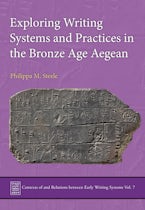The body is the main forum for learning about how to do, think and believe and it is a starting point for the granting and forming of many forms of meaning. Fourteen papers explore the relationship between knowledge and the body through a series of historical and archaeological case studies. More specifically, it considers the concept of embodied knowledge by exploring some of the apparent diverse and yet shared forms of what may be called embodied knowledge. The papers share a focus on knowledge as it is implicit and expressed through the human body and bodily action, and as it formed through intentional practices. But what is this kind of knowledge? Using specific case studies of knowledgeable actions, the book explores embodied knowledge through a focus on practice. It does so through two different, yet interconnected aspects of how such knowledge expresses itself: belief and technology.
1. Embodied knowledge. Reflections on belief and technology: Introduction (Marie Louise Stig Sørensen and Katharina Rebay-Salisbury)
Part I
2. Introduction to Part I: belief as practice. (Marie Louise Stig Sørensen)
3. Inhumation and cremation: how burial practices are linked to beliefs (Katharina Rebay-Salisbury)
4. Delusion and disclosure: human disposal and the aesthetics of vagueness (Tim Flohr Sørensen)
5. Material culture, embodiment and the construction of religious knowledge (Mads Dengsø Jessen)
6. Sealed by the cross: protecting the body in Anglo-Saxon England (Helen Foxhall Forbes)
7. The role of healing in the Jesuit mission to China, 1582-1610 (Mary Laven)
8. Protest re-embodied: shifting technologies of moral suasion in India (Jacob Copeman)
Part II
9. Introduction to Part II: technology as practice. (Lise Bender Jørgensen)
10. The language of craftsmanship (Harald Bentz Høgseth)
11. Conceptual knowledge as technologically materialised: a case study of pottery production, consumption and community practice (Sheila Kohring)
12. Many hands make light work: potting and embodied knowledge at the Bronze Age tell at Százhalombatta, Hungary (Sofaer and Sandy Budden)
13. Spinning faith (Lise Bender Jørgensen)
14. The sound of fire, taste of copper, feel of bronze, and colours of the cast: sensory aspects of metalworking technology (Maikel Henricus Gerardus Kuijpers)












